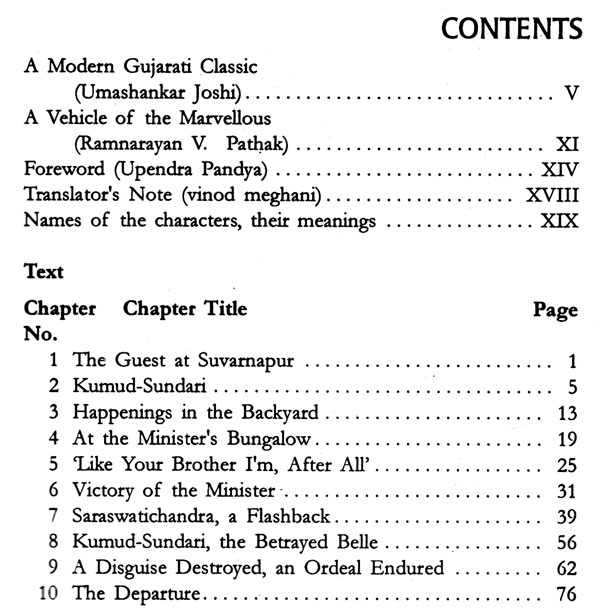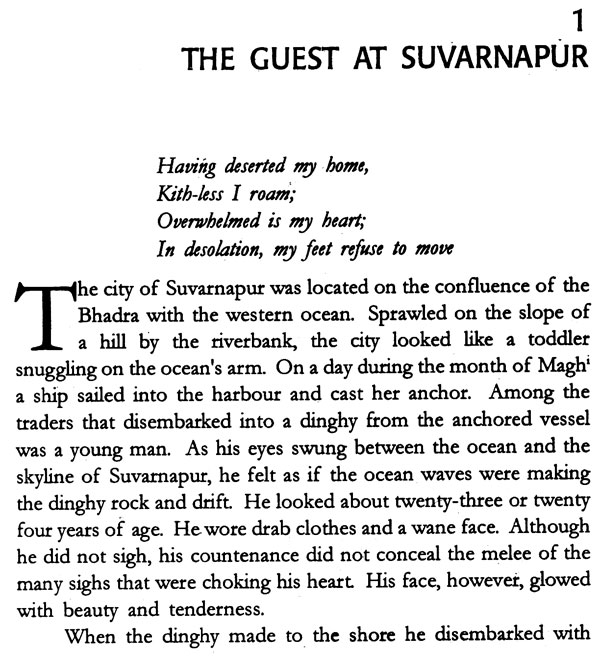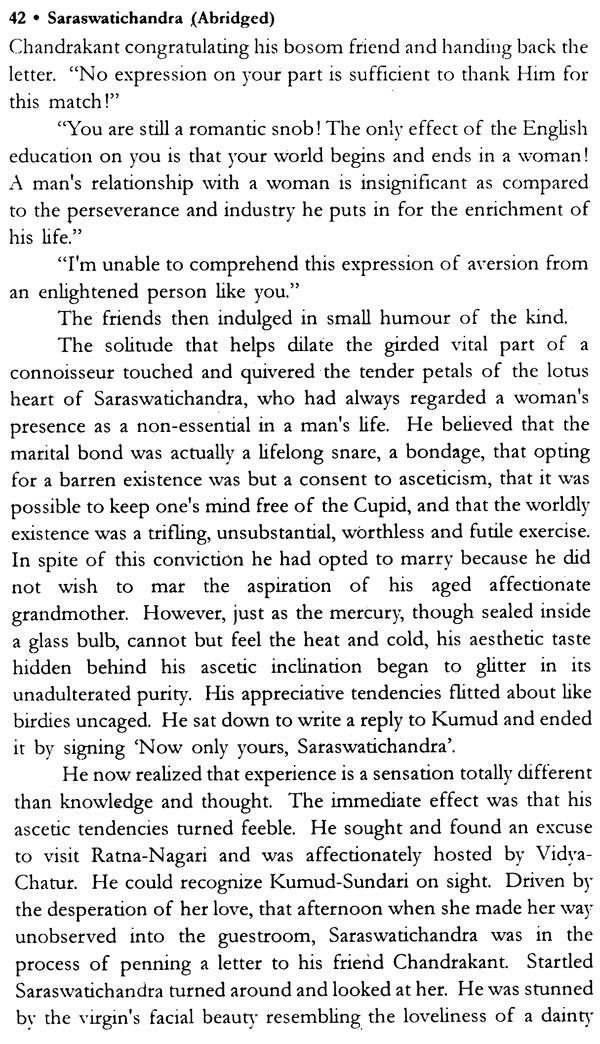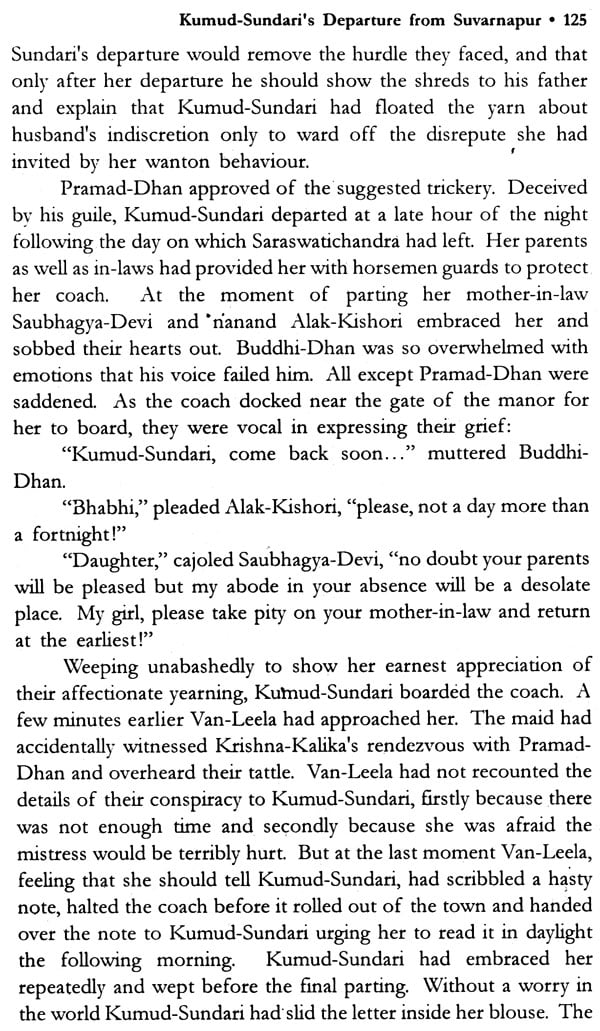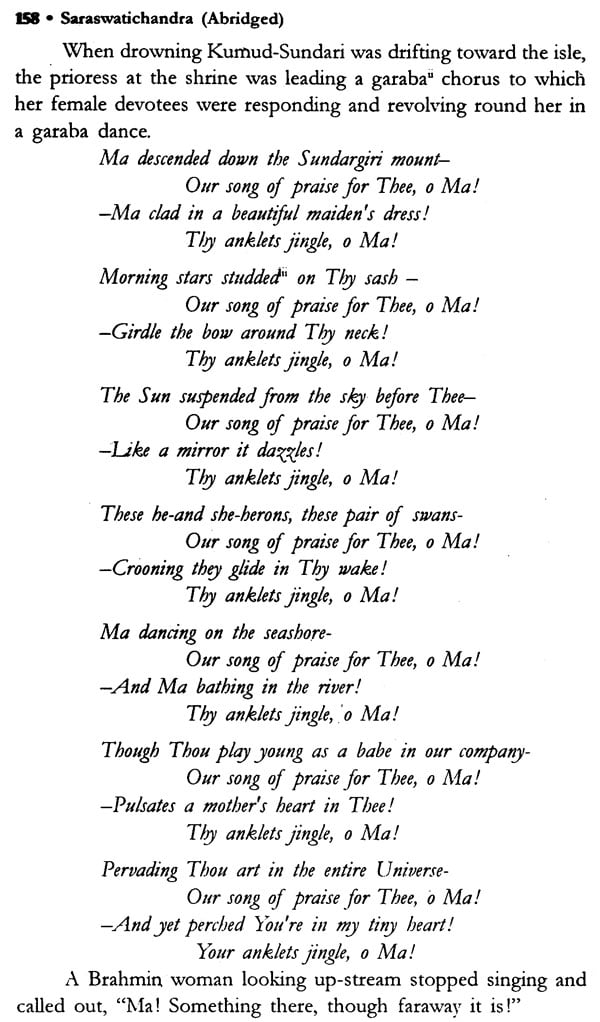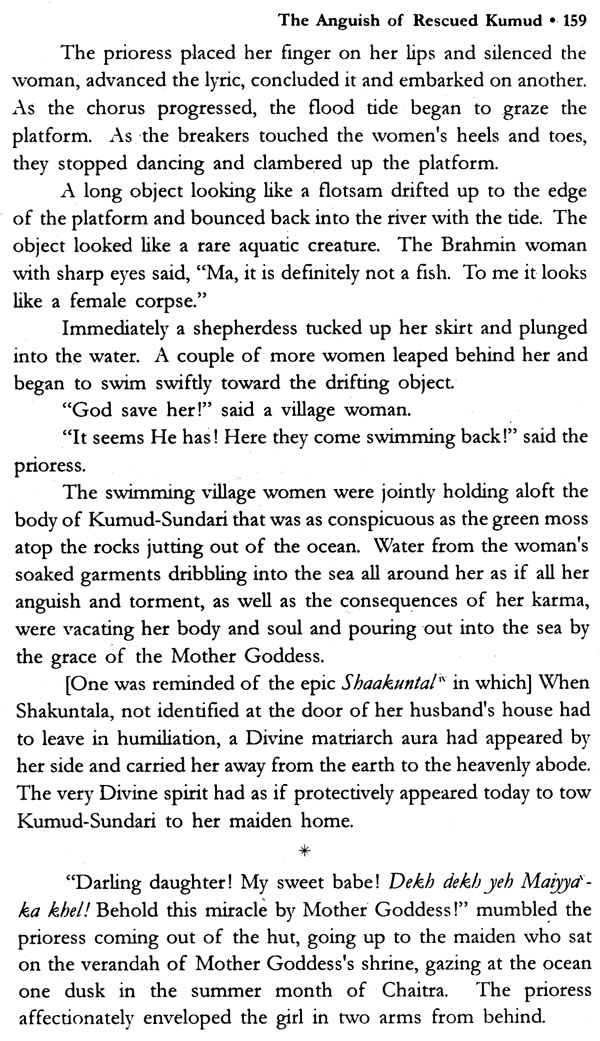
Saraswatichandra (Abridged)
Book Specification
| Item Code: | NAR067 |
| Author: | Govardhanram Tripathi and Vinod Meghani |
| Publisher: | SAHITYA AKADEMI, DELHI |
| Language: | English |
| Edition: | 2017 |
| ISBN: | 9788126024827 |
| Pages: | 300 |
| Cover: | PAPERBACK |
| Other Details | 8.50 X 5.50 inch |
| Weight | 380 gm |
Book Description
Saraswatichandra, a Gujarati novel by Govardhanram Tripathi, comprising nearly 2000 pages and four volumes was published between 1887 and 1901. The work not only manifested the sociological ambience of the latter half of the 19th Century but also traced the maturing process of the author's idealism that transcended from individual growth to universal emancipation. Its epitome-a Kathaa-saar, by Upendra Pandya-was published in 1951 and an abridgement-Bruhat Sankshep-was published by the Sahitya Akademi in 1960. The former, translated by Vinod Meghani, now published by Sahitya Akademi with the title Saraswatichandra (Abridged), is the first English translation of the author's work.
Umashankar Joshi writes in the introduction to Brubat Sanksbep:
Govardhanram Tripathi (1855-1907) Artist': Ravishankar Raval [Credit acknowledged': Principal, Shamaldas Arts College, Bhavnagar and Kanak Raval, USA] Govardhanram Tripathi was the only individual prior to Mahatma Gandhi to have played an equally unique role in the cultural rejuvenation of Gujarat. Govardhanram was a product of the Indian renaissance. The first part of Saraswatichandra was published when the author was thirty-two. At the age of twenty he had resolved that he would retire at forty and devote his remaining years to work for the material, moral and spiritual betterment of his country. He succeeded in retiring at the age of forty-three when he stood in his own works 'on the peak of my professional reputation' and was 'earning more than the total income of all the legal practitioners of Gujarat'. Ability to re-create in written words the vision of an extraordinarily beautiful world is the chief faculty of Govardhanram's intellect. Before his eyes hover Ramayana-Mahabharata, Buddhist Jataks, the plays of Bhavabhooti and Kalidasa, the works by Western masters like Dante, Goethe and others.
Saraswatichandra is a glorious classic of Gujarati literature. It provides a vivid, in-depth, profound depiction - specifically of Gujarat but also of the country as a whole - of the transitional period around 1885AD. The reader will identify innumerable facets of site era - like the spokes of a wheel shooting out from its axis - emerging from the work: the British rule and its tightening grip...an oppressed and servile multitude crushed between ignorance and poverty - as if between two layers of a millstone - and exploited by the rulers... a subject nation -submissive as a milch coo and meek as a goose that laid golden eggs - 'that should have been worshipped'... our fast-clanging and disintegrating Family of Man... mutual love - like rejuvenating fragrance that sanctified the scarified life... the advent of westernized education and its impact on the Indian youth... changing values in an era of transition... the growing awareness about the emancipation of Women - not only for the well-being but also for the genuine and overall growth of society... a static and lifeless social infrastructure corrupted by blind faith and sophistry in the name of religion... manifestation of the western culture fostered by science and industry, and its spreading impact on India... increasing sense of dedication and the prices paid in the process - like the sacrificing of Saraswatichandra, Kumud and Kusum - ... ascetics finding fulfillment in missionary activities... However, the author's centralized motive of this delineation was the national resurgence and social emancipation. At the root of the protagonist's bewilderment and detachment by the author's desire to reveal the richness of the folklore and to bring about social awareness.
This mighty work comprising about two thousand pages of four volumes is like a ‘4st, sprawling, mountainous forest full of labyrinths of crisscrossing trails, steep ascents and cascading jungle paths, as well as lurking caverns. There is much more in it than the numerous chapters full of Abstract Sanskrit Discourses or Elaboration of Malmbharat - like thickets in which an ordinary reader may find himself lost. However, the relish of the aesthetic beauty of Saraswatichandra is an extraordinary experience, an inner realization, like the breaking into view of a majestic mountain range full of peaks -barge and small - looming large over this woodlands. It is like the embracing serenity of a rippleless lake, like the playful gurgle of a brook, like the glee of a blossoming spring. Inexhaustible remains even today Saraswatichandrds potential to inspire, and its sublime splendour like that of an illumined peak.
[From the Foreword to the Bruhat Sankshep]
In India we have Ramgana, Mababbarata and Kadambari in abridged forms. The best or bulky creations of the world literature appear in abridged form in so toy countries. Saranvatichandra, an extended Gujarati novel, is contained M more than 2000 Crown-sized pages of four volumes. Its sheer size is making its latter two volumes increasingly disregarded by the layman.
**Contents and Sample Pages**
